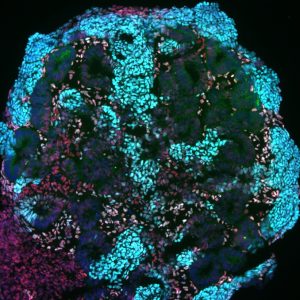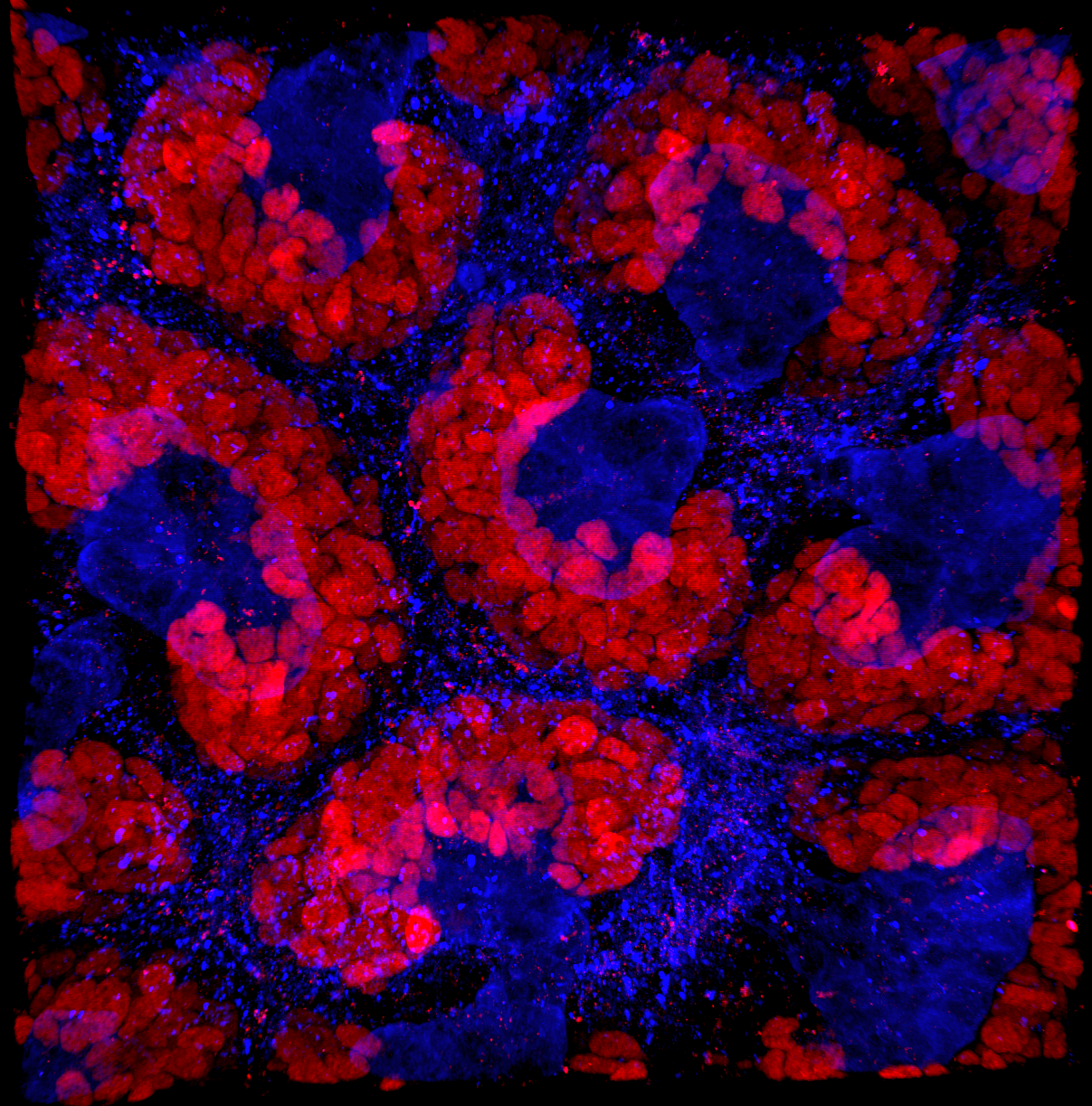Wilms tumor (WT) is the most common pediatric kidney cancer and blastemal-predominant tumors represent a more lethal, chemotherapy-resistant form of WT. This tumor subtype expresses markers found only in the nephrogenic niche of the fetal kidney, suggesting it arises from a malignant transformation of these cells. Sequencing of blastemal-predominant tumors has identified a recurring single amino acid mutation, Q177R, within the conserved DNA binding domains of the closely related transcription factors SIX1/SIX2. These factors are critical for the maintenance of nephron progenitors during mammalian kidney development. Therefore, we hypothesize that this recurring mutation disrupts the regulatory networks controlled by SIX1/SIX2 resulting in the malignant transformation of nephron progenitors. Efforts to model WT in mice have proven challenging and differences in gene expression dynamics between mouse and human nephrogenesis, specifically the temporal expression of SIX1, necessitates a novel system in which to investigate the tumorigenic potential of the Q177R mutation.

Relevant Publication
Stevenson MJ, Phanor SK, Patel U, Gisselbrecht SS, Bulyk ML, O’Brien LL. 2023. Altered binding affinity of SIX1-Q177R correlates with enhanced WNT5A and WNT pathway effector expression in Wilms tumor. Dis Model Mech. doi: 10.1242/dmm.050208
